Myriad types of cameras exist to meet different artistic and practical needs. Some are flexible and accommodate a wide range of photography styles, but certain types of cameras are better reserved for specialized use cases, skill levels, or budgets. These devices collectively range from standard digital or film tools to highly durable or nuanced selections. Understanding what makes different models distinct helps you choose the right tool and how to get the most out of your captures.

Camera types represent diverse tools of the photographic or filmmaking trade. Contemporary models are durable and relatively ergonomic regardless of type. Budget or beginner-friendly examples display simplified settings and fixed lenses, whereas mid-range to professional-grade selections have greater levels of manual control, interchangeable lens systems, and higher image quality. The major drawback of the former is their lack of customization, whereas the latter often demonstrates a steeper learning curve.
Choosing the best camera type for you is vital as it will impact your overall experience. These distinctions influence everything from your intended purpose to your ease of use, control, and comfort. You’ll additionally have to address other factors like budget, lens compatibility, size, and weight of a specific type. There are broad characteristics, but different models and brands may offer exceptions to minimize typical barriers.
Below, we explore the following fifteen types of cameras.
- Digital SLR cameras
- Film cameras
- Compact cameras
- Mirrorless cameras
- Bridge cameras
- Instant cameras
- Action cameras
- 360 cameras
- Drones
- Medium format cameras
- Rugged cameras
- Digital cinema cameras
- Smartphone cameras
- Interchangeable lens cameras
- Waterproof cameras
1. Digital SLR cameras
Digital SLR (single-lens reflex or DSLR) cameras are highly popular and versatile. They serve as the industry standard for many photographers because of their primary mechanism—mirroring light onto an optical viewfinder. This ensures photographers see exactly what the lens captures. Other main features include interchangeable lens systems and diverse controls. Price points are broad; you’ll find DSLRs as low as $400 for entry-level devices, while professional models exceed three figures.
View in gallery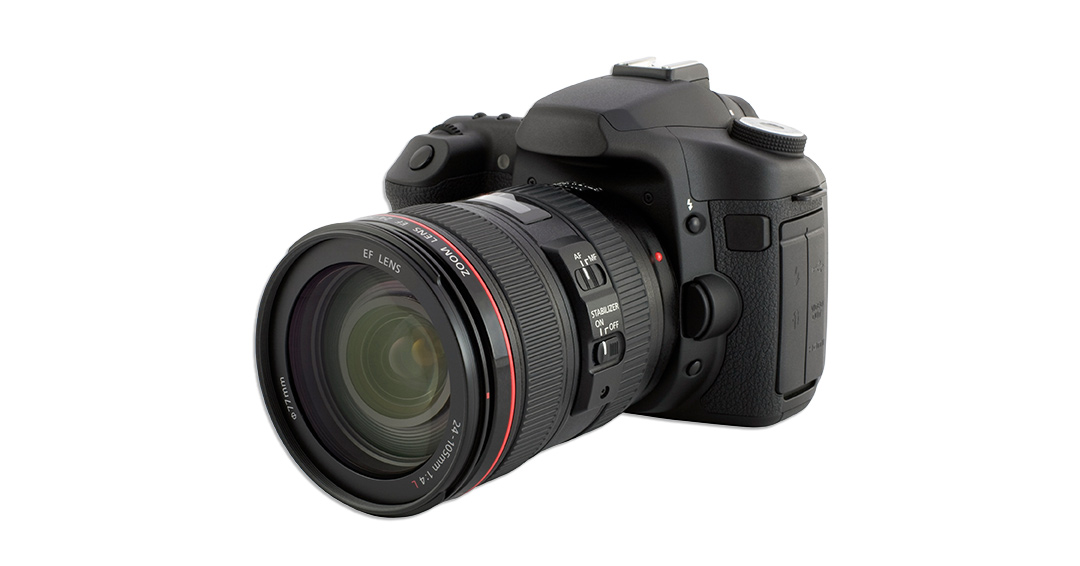
The build of DSLR cameras emphasizes durability and ergonomics, ensuring longevity. Design sports comfortable but comprehensive handling. You additionally gain access to a refined interface that provides high-quality captures and flexible experimentation. Consequently, DSLRs suit various conditions and environments, achieving results that bridge and compact cameras cannot.
Lens compatibility is extensive as one of the most popular types of digital cameras. Leading brands like Canon, Sony, and Nikon offer many lenses and accessories so you may achieve distinctive shots. Furthermore, contemporary models offer connectivity options, including Wi-Fi, NFC, and Bluetooth, for easy sharing and remote camera control.
The foremost advantage of DSLRs is their versatility. They’re capable of exceptional image quality, on par or surpassing mirrorless cameras depending on the brand. As a result, they’re the go-to for many photographers. That said, DSLRs are not easy to transport. They have a bulkier build than other types of cameras. Moreover, they’re not beginner-friendly. It’ll take time to comprehend the range of customization a mid-range or premium DSLR offers.
2. Film cameras
Film cameras capture images on photographic film, a light-sensitive material. These devices are staples in photography due to their analog qualities and ability to produce images with a distinctive look. Main features include manual controls for focus, aperture, and shutter speed. There are no digital components. Meanwhile, pricing varies broadly, as you may find vintage 35mm film cameras at a highly affordable price, more modern devices for professionals at several hundred or more, or entry-level models at around $100.
View in gallery
The design and build quality of film cameras center on precision photography through mechanical operations and optics. This leads to tactile feedback but limited ease of use. As they use photographic film, you’ll need to be proficient in loading film, adjusting settings manually, and understanding exposure to achieve desired results.
Meanwhile, the technical aspects of these cameras are robust. Lens compatibility depends on the camera system; many use a proprietary mount, so you might need adapters for compatibility with other lens types. Film cameras are analog, meaning you must develop your film via a traditional darkroom process rather than through connectivity features.
The main attraction and advantage of film cameras is the final look of the photographs. These images have a distinct aesthetic that digital devices try and often fail to emulate. Hobbyists and professional photographers also appreciate the tactile feedback of manual controls, the dynamic range and resolution of film, and the need to consider every shot. That said, using film is costly and timely. You need to develop the photos to see the final results and be more selective of your shots. The former may take anywhere from thirty minutes to a few hours depending on the type of film and the development process used. Focus and exposure errors are also common, leading to manual mishandling and poor results.
3. Compact cameras
Compact cameras (or point-and-shoot cameras) are user-friendly devices that prioritize easy handling. These devices are digital and portable, demonstrating a sleek build and streamlined controls. Their primary functionality is to capture high-quality images quickly with automatic features to minimize user input. Consequently, the ease of use is on par with instant and smartphone cameras which have a similar point-and-shoot operation. Compact cameras are also cheaper than other digital cameras, representing a budget-friendly choice for first-time photographers and averaging as little as $50 to $100.
View in gallery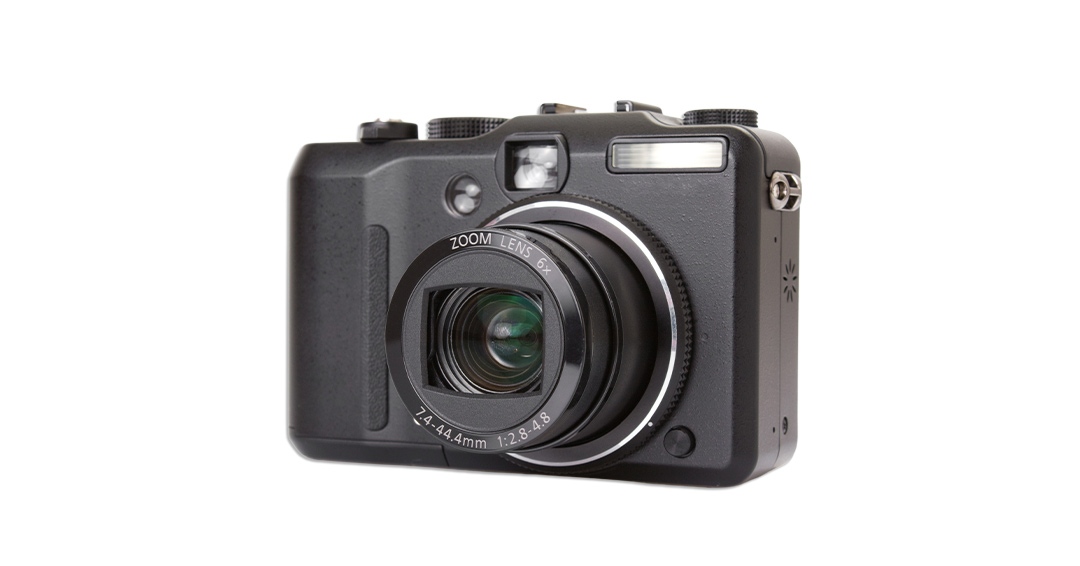
The design of compact cameras is geared towards convenience and small, lightweight bodies that easily fit in a pocket or camera bag. Build quality varies. Most are durable, demonstrating a mixture of metal and plastic components, but low-end selections are less likely to last and demonstrate lower resolutions.
Technical features are streamlined. There are automatic settings for exposure and focus, as well as image stabilization, face recognition, and even Wi-Fi connectivity in some models. Such features embolden the devices’ ease of use, as you’re able to capture images quickly but with less control. That said, there is no lens compatibility system. Compact cameras feature fixed lenses, which simplifies operation but limits experimentation.
Pros of compact cameras include their portability and user-friendly interfaces. You’re able to use and carry compact cameras in most settings. There’s also no learning curve as automatic modes handle the complexities of photography. Cons center on these automatic settings. A lack of manual controls reduces performance and creative experimentation. Additionally, as budget-friendly digital cameras, compact cameras do not achieve the same image quality as more complex digital devices.
4. Mirrorless cameras
Mirrorless cameras are a subset of devices that are uniquely compact and high-performing. These cameras are often compared to DSLRs, which are popular and versatile. However, the functionality of mirrorless cameras is capable of surpassing DSLRs as they’re smaller and offer comparable image quality. Other features include interchangeable lenses, silent shooting modes, and high-grade video functions. That said, these devices have a high price point. Expect a range of $1,000 to $3,000 or more.
View in gallery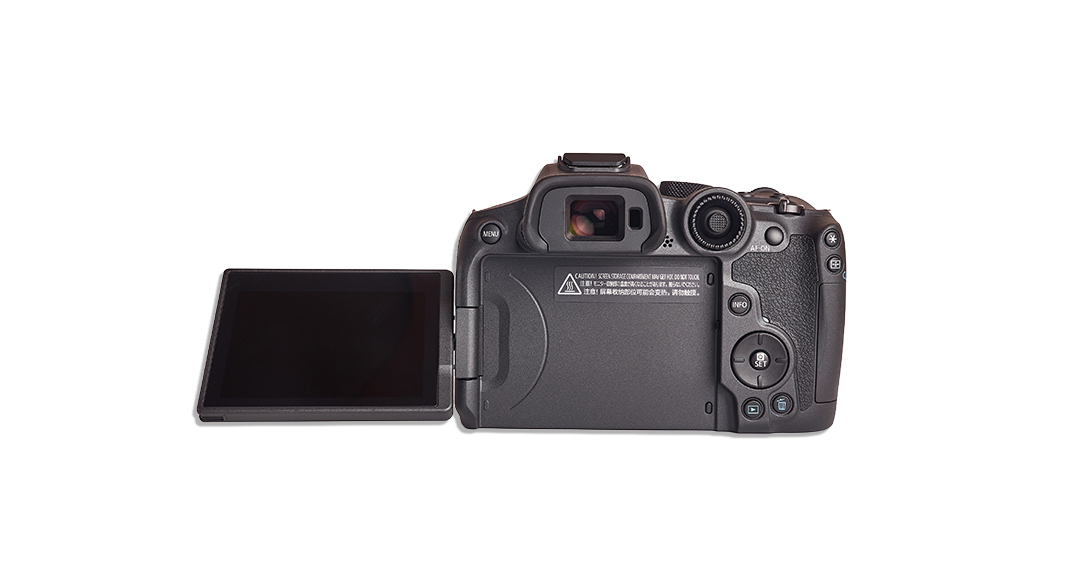
The design of mirrorless cameras emphasizes user convenience and technological innovation. Their bodies are made from durable materials like magnesium alloy, ensuring they’re easy to carry while allowing for durability. Devices additionally feature suitable ergonomics, with comfortable grips and intuitive control layouts. Ease of use depends on your skill level as these are more advanced models compared to beginner-friendly compact cameras.
Technical features reflect ingenuity. For instance, mirrorless cameras accommodate either small or large sensors, available in full-frame and APS-C sizes. Mirrorless systems additionally demonstrate broad lens compatibility—which is facilitated by various adapters, and support for electronic viewfinders (EVFs) for precise framing. Basic connectivity features like Wi-Fi and Bluetooth allow for easy image sharing and remote camera control.
Pros of this category include their compact size. They’re ideal for travel or everyday photography. An interchangeable lens system affords adaptability and the same degree of image quality found in DSLRs. Cons include shorter battery life due to constant sensor and EVF usage. Furthermore, mirrorless cameras are a serious investment. They present a higher price point than many DSLRs, which compound with lenses and accessories.
5. Bridge cameras
Bridge cameras represent an intermediary device in photography. Their primary functionality centers on a fixed lens but with extensive zoom capabilities. Consequently, they’re seen as a graduation from compact cameras but a step below the complexity of DSLRs or mirrorless systems, which have interchangeable lenses. Price points reflect this intermediary element, slipping between $500 to $1,000 for quality models.
View in gallery
These devices are designed with ergonomics in mind, often resembling DSLRs in shape but lighter and less bulky. Build quality varies on the make of the model, but generally consists of durable plastics and metals. Additionally, bridge cameras have smaller sensors compared to DSLRs and mirrorless alternatives. This creates a notable difference in low-light performance and depth of field. However, they’re easier to use and perform well for most complex shots.
Furthermore, these cameras have manual controls and electronic viewfinders which achieve similar results and feedback as DSLRs or mirrorless. They inherently lack an interchangeable lens system. However, they have a distinct look, with a lengthy lens and superzoom capabilities that achieve broad framing options.
The main benefit of a bridge camera is the convenience of its design. Manufacturers offer a wide zoom range in a single lens, which eliminates the inflexibility of a fixed lens. They’re additionally a natural evolution from compact cameras due to their ease of use. However, bridge cameras are not a replacement for DSLRs or mirrorless cameras as they can’t meet the same image quality or creative experimentation.
6. Instant cameras
Instant cameras are a distinct type of camera that produce physical photos within seconds. These devices and the images they produce are often called polaroids, which refer to a brand and generic trademark for the device. Instant cameras rose in popularity during the 1970s due to Polaroid and represent a nostalgic element similar to traditional film cameras. They experienced a resurgence during the early 2010s through brands like Fujifilm, which introduced modern models.
View in gallery
The core functionality and features of instant cameras center on the instant production of high-quality images, with a focus on basic, user-friendly interfaces. Instant cameras are more affordable than most photographic devices as they’re targeted toward casual photographs. Expect a price range of $50 to $150. Higher-end options offer features like adjustable settings and Bluetooth connectivity.
The design and build quality of modern instant cameras centers on portability, ease of use, and aesthetics. Aesthetic appeal is a significant factor, either appealing to the classic style of Polaroid’s models or incorporating pastel colors and minimalist elements to appeal to young photographers. They’re also compact and lightweight as they’re intended to capture spontaneous moments while you’re on the move. Despite their seemingly simple operation, some instant cameras incorporate modern features such as lens options, manual exposure controls, and even integration with smartphone apps for additional functionalities.
Pros of using an instant camera include the immediate physical photo output. This enhances the photography experience, allowing you to tangibly interact with your results. The cameras are also notably easier to use than other types of devices. Cons include the cost of film cartridges. Instant cameras use film to produce their images, making the cost per photo higher than digital alternatives. Additionally, the devices feature limited controls and relatively lower image quality due to instant prints.
7. Action cameras
Action cameras capture videos and photos in dynamic environments that would otherwise damage other types of cameras. This includes snorkeling, surfing, hiking, snowboarding, kayaking, and other intense outdoor activities. They feature wide-angle lenses and are often waterproof, shockproof, and resistant to dust and cold (much like rugged cameras). Pricing scales between $150 and $650 for most models, but it’s possible to find budget offerings.
View in gallery
Action cameras’ main features and build quality prioritize durability and resistance to environmental elements. Brands achieve this through a polycarbonate build and rubber sealing, which protects against water and impact. Customers often use action cameras to record first-person perspectives. As a result, the device often displays minimal controls for ease of use. That said, performance varies depending on the quality of the model. Advanced models provide 4K video and live streaming capabilities, while other budget options often have lowered image and sound quality.
Other technical aspects focus on maneuverability and compactness. You can attach the device to helmets, vehicles, gear, and so on and maintain relative image stabilization. This additionally means the devices are compact, which leads to fixed lenses that are not interchangeable. The trade-off is field-of-view shots ideal for action or dynamic scenes. You’ll additionally find typical connectivity options, namely Wi-Fi and Bluetooth.
Photographers and videographers enjoy action cameras because of their portability, robustness, and ability to capture dynamic perspectives in challenging environments. They’re notably easier to handle than other types of digital cameras, allowing you to focus on the scene rather than manual settings. However, this means you have limited control of your shots. Furthermore, budget and even mid-range options sport lower image quality than traditional digital cameras.
8. 360 cameras
360 cameras are a unique device that captures scenes from a full 360-degree perspective. The resulting spherical images are more distinct than captures from any other type of camera. This keystone functionality is more niche but has uses for panoramic shots, interactive media, and virtual reality (VR). Other notable features include high-resolution capture, live streaming capabilities, and image stabilization. Price point varies from as low as $500 to $1,000 for quality models.
View in gallery
The design of 360 cameras is notably compact. This simplifies usage and allows you to set up shots with less hassle. Most models additionally feature two wide-angle lenses back-to-back, which the camera software stitches together to create panoramas. Performance and connectivity features are simplified as these devices are less hands-on than others. This allows for spherical images and videos that are accessible via smartphone app integration. However, a degree of editing may be needed to ensure seamlessness.
Lenses for 360 cameras are fixed. They can’t be exchanged due to the build and necessity of 360-degree capture. Devices nevertheless have high-quality images alongside a lightweight build, portability, and easy mounting. Some 360 cameras are even waterproof. Consequently, they’re useful devices for outdoor or underwater shots.
The overall advantage of 360 cameras is their all-encompassing and unique perspective. Manufacturers additionally reduce user input and automate most of the adjustments. However, the devices are only practical for select needs. Therefore, 360s cameras are best seen as specialized tools rather than everyday cameras. Editing 360-shoots additionally presents a learning curve that traditional photography and filmmaking do not have.
9. Camera drones
Drones are a type of aerial camera capable of capturing images and videos from the sky. Drones are remotely controlled, meaning you pilot them from the ground to capture a desired perspective. Their primary functionality is maneuverability, crossing great distances in a short time. Other notable features include stabilization, GPS tracking, live video feed, collision avoidance systems, and autonomous flight modes. Meanwhile, prices range from as low as $50 for entry-level models to as high as $10,000 for professional-grade drones.
View in gallery
Price heavily impacts drone design and build quality, but they’re generally made of lightweight materials such as carbon fiber or plastic. Additionally, their design components are distinct from other types of cameras. They consist of a chassis, motors, propellers, battery, and a flight controller board that manages navigation and stability. The camera itself is integrated directly or mounted on a gimbal, which helps stabilize it. Users should note the learning curve in operating drones, with performance and ease of use being heavily influenced by battery life and weather conditions.
Technical specifications also vary. For instance, some high-end professional drones have interchangeable lens systems, thereby enhancing versatility and performance. Most consumer-grade models have fixed lenses. The mounting system is generally integrated, with high-end models supporting different lens types via adapters. You’ll additionally find connectivity features in all camera drones, including Wi-Fi and Bluetooth for remote control and data transfer.
The main advantage of drones compared to other types of cameras is the unique perspectives they offer. Their maneuverability means they reach inaccessible areas and cross great distances. Furthermore, the broad price range means they’re a beginner-friendly camera. That said, drones have regulatory restrictions as aerial vehicles. You’ll need to research your region’s guidelines to use a drone appropriately. Additionally, you may find the learning curve to be a barrier as they’re not as straightforward to use as compact cameras or smartphones.
10. Medium format cameras
Medium format cameras are distinguished by enhanced image quality. Their primary functionality centers on a larger image sensor. This allows them to capture a shallower depth of field and greater details than DSLRs, mirrorless, or film cameras. Other features such as advanced dynamic range and color fidelity further set them apart, elevating the photographic results to professional standards. These advanced features contribute to a higher price tag, however. Medium format cameras’ price range scales between $3,000 to $10,000 or more as premium photographic tools.
View in gallery
Medium format cameras additionally tend to be heavier and larger than most devices due to their larger sensors. Consequently, the build quality and design combine robustness with ergonomics to manage size and weight. They’re additionally made of high-grade materials to match their price tag and technological capability. Ease of use varies due to the cameras’ complexity and operation presents a learning curve.
Meanwhile, lens compatibility is expansive, taking advantage of the larger image sensor to enhance performance and creative possibilities. This means you’re able to achieve a unique aesthetic and effects that are difficult to replicate with smaller sensor cameras. Connectivity features such as Wi-Fi and tethering capabilities are additionally included, aiding in workflow.
Pros of medium format cameras include unparalleled image depth and dynamic range. These devices are the favored tools of fashion, landscape, and portrait photographers as they capture extensive details and help create distinct aesthetics. That said, they’re a major investment and not immediately beginner-friendly due to their complexity. They’re also not ideal for capturing fast-moving scenes due to their slower focus speed and bulkier mobility.
11. Rugged cameras
Rugged cameras (commonly called tough cameras) are devices capable of withstanding extremes. Action and waterproof cameras share some characteristics with rugged cameras, but they’re distinct due to their more versatile durability. This includes immersion in water, drops from significant heights, exposure to dust, and extreme temperatures. This functionality makes them ideal for outdoor or adventure photographers. Other notable features include anti-fog lenses, underwater shooting modes, built-in GPS, and standard connectivity features.
View in gallery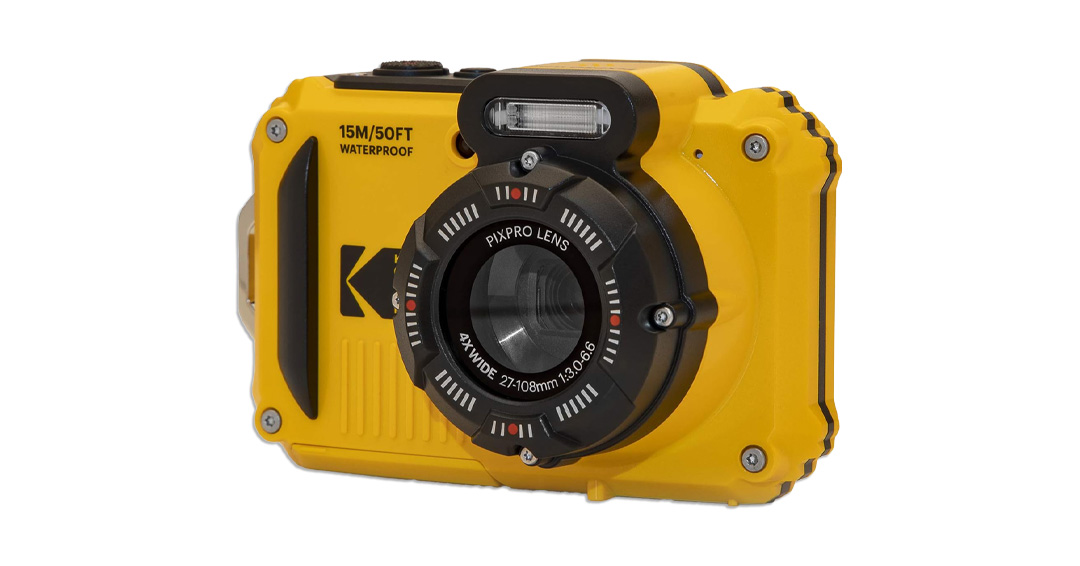
Pricing varies according to the design and build quality of the device, averaging $300 to $600. Rugged cameras generally cost more than standard digital cameras of a similar image quality level due to their durability. They sport an exterior made of polycarbonate with stainless steel and titanium elements. The overall design additionally prioritizes ease of use in challenging conditions, featuring large buttons and straightforward interfaces.
That said, the durability of rugged cameras is offset by their limited flexibility. They come with fixed lenses that generally allow for wide-angle shots. However, some brands provide accessories to better capture your desired vision. This includes lens filters for color correction and external lens attachments for capturing macros rather than wide angles.
The advantages of these devices center on their durability. Hobbyists and professionals capture high-quality images and videos in environments that would damage standard devices. This in turn allows for unique shots, such as that of underwater landscapes, extreme sports in action, or wildlife in remote and harsh areas. Disadvantages include limited flexibility due to fixed lens systems and a higher price point compared to standard digital cameras.
12. Digital cinema cameras
Digital cinema cameras (otherwise known as digital movie cameras) are professional devices dedicated to filmmaking. Their features and functionality surpass other devices as they’re equipped with large sensors, higher resolutions such as 8K, and advanced color grading options. These features allow for more comprehensive control and enable filmmakers to achieve distinct shots or aesthetics. These cameras additionally have a high price point, averaging a minimum of $10,000 with Hollywood-grade selections surpassing $50,000. Consequently, they’re not a typical hobbyist item and are primarily used for feature films, commercials, and high-budget video projects.
View in gallery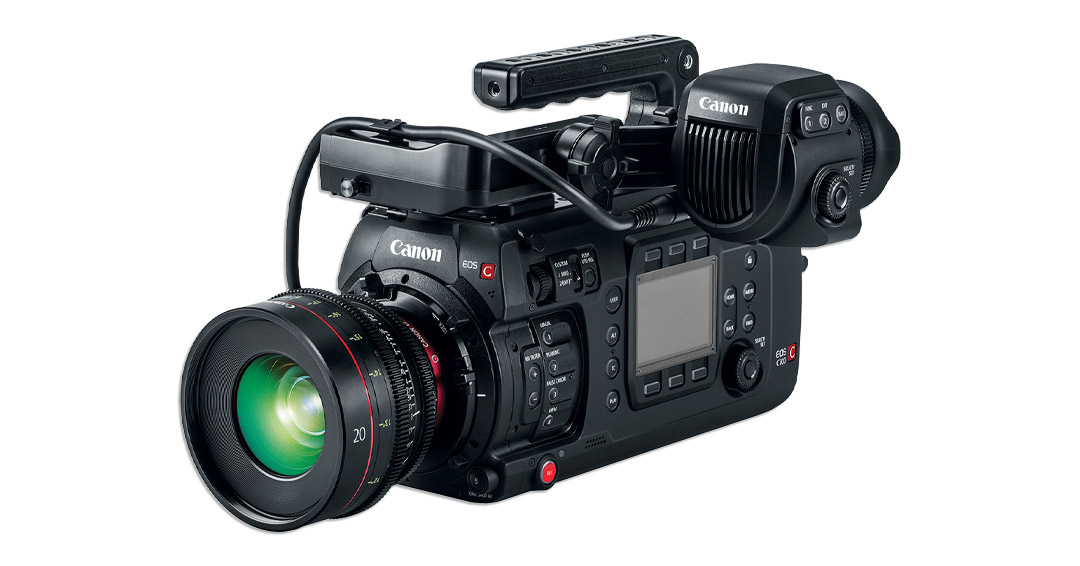
The build of digital cinema cameras emphasizes robustness. They’re notably bulkier and heavier than consumer-grade cameras due to their design and number of technical parts. Furthermore, they accommodate several accessories like external monitors, microphones, batteries, and rigs to suit different shooting scenarios. Connectivity features extend to professional-grade outputs for video and audio, including SDI and HDMI, and wireless options for remote control and monitoring.
Digital cinema cameras additionally feature flexibility. For instance, the lens system is highly versatile, allowing for precise handling and decision-making. Examples of key mounts found with these devices include positive lock mounts (an industry standard), EF mounts, and E mounts. These mounts allow filmmakers to capture everything from expansive landscapes to intricate close-ups.
The foremost advantage of these devices is their professional-grade image quality. They allow filmmakers to bring their vision to life in unique ways, demonstrating technological ingenuity. However, this advantage is offset by the price and maintenance of digital cinema cameras. They’re not a typical hobbyist item and must be handled with care. Bulkiness and a more complex interface additionally limit the applicability of these cameras.
13. Smartphone cameras
Smartphone cameras are one of the most convenient and widely used photographic devices. They owe their popularity to their ease of use, high-quality images, and ability to capture and share scenes quickly. A smartphone’s camera isn’t its primary functionality, but it’s a major pull for users and even central to some marketing campaigns of next-generation models.
View in gallery
Pricing varies broadly, which impacts image and build quality. Budget models often feature simpler camera setups and adequate quality. Meanwhile, new generation iPhones, Samsung Galaxies, and other high-end offerings provide multi-lens systems, high-resolution sensors, noise-free captures, and more robust editing and image processing. These features often match or surpass dedicated digital cameras.
Design-wise, smartphone cameras prioritize compactness and integration. Lenses are built-in, meaning they’re not designed to be interchangeable. However, the introduction of multiple lenses enhances quality without sacrificing space. You may additionally attach an external lens to many models to achieve different effects. Connectivity is also inherent, with Wi-Fi, cellular data, and Bluetooth options enabling immediate photo sharing and cloud storage.
Smartphones are a highly popular choice for hobbyist photographers and even some filmmakers due to their convenience. You’re able to capture high-quality scenes wherever, whenever with the likelihood of continuous upgrades from the brand. That said, smartphones aren’t a total replacement for traditional cameras. They demonstrate a limited sensor size compared to dedicated digital cameras, resulting in lower performance in low-light conditions. You additionally have less control over settings, whereas you’re able to finetune other types of cameras.
14. Interchangeable lens cameras
Interchangeable lens cameras (ILCs) categorize any type of camera that you’re able to switch lenses for. This encompasses many digital and film devices, such as medium format cameras and DSLRs. ILCs vary in price as they overlap with different types of devices and do not include other lenses you’d like to purchase.
View in gallery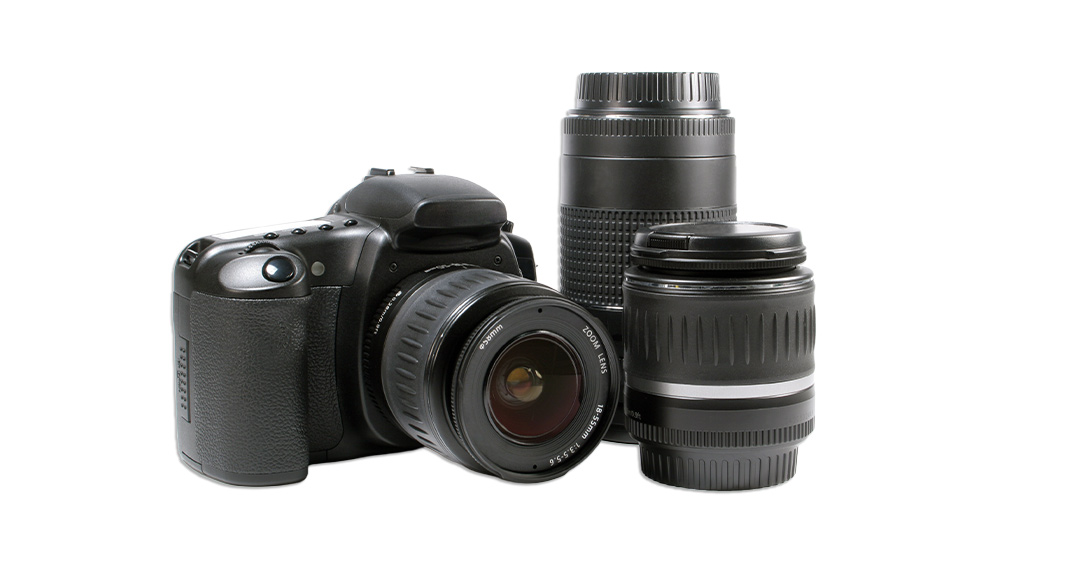
The interchangeable lens system is the key aspect of this device’s functionality. It is supported by a range of mounts that promote higher-grade performance. You’ll find lenses for prime, macro, and other optics, making ILCs one of the most robust selections. Meanwhile, connectivity options depend on whether you get a film or digital camera, but the latter type offers utility for Wi-Fi and more.
The build quality of ILCs emphasizes durability and ergonomics, featuring bodies made from high-grade plastics or metal alloys. The design focuses on user comfort and accessibility of controls, accommodating extended usage. Size and ease of use vary across models, with some designed for compactness and simplicity, and others for professional-grade handling.
Major pros of interchangeable lens cameras center on their adaptability. By switching out for a desired lens, you’re free to experiment with different compositions and optics. Many contemporary ILCs sport high image quality, though this varies on price points and which model you opt for. That said, multiple lenses and accessories add to the cost of the device. These cameras additionally sport a learning curve as you need to become familiar with different lenses and how to maintain them. Other devices, such as compact or smartphone cameras, are notably more convenient due to their design and fixed lenses.
15. Waterproof cameras
Waterproof cameras capture images while submerged in water. They’re similar to rugged cameras, but the latter is shock, dust, and sometimes even freezeproof. Meanwhile, the functionality of waterproof devices centers on aquatic or rainy environments. Previous categories such as action, compact, and smartphones are typically waterproof as well. Features prioritize ease of use while underwater, with large buttons and simple interfaces for operation if you have wet hands or wear gloves.
View in gallery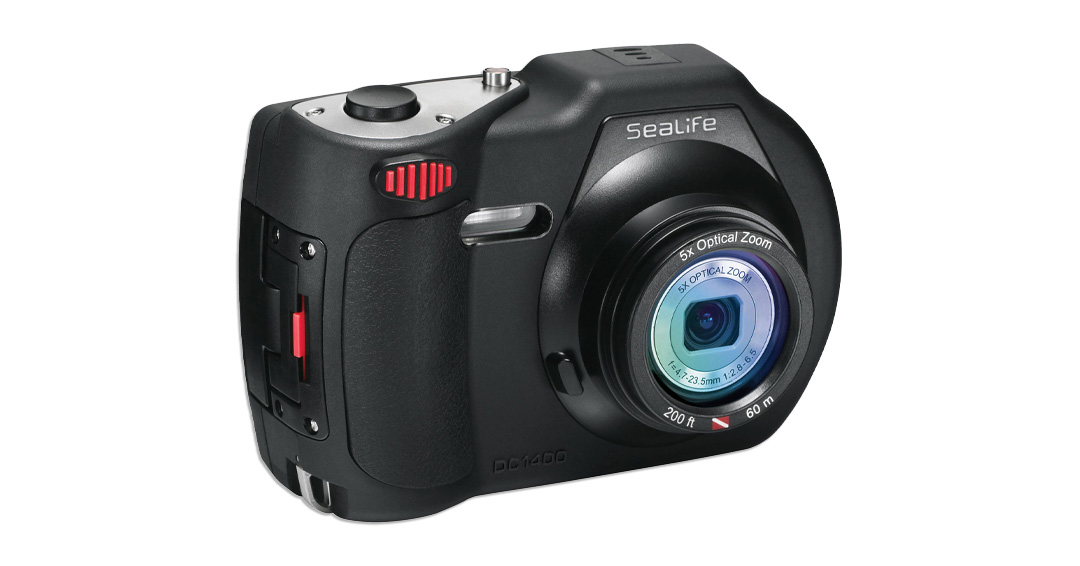
The design of waterproof cameras additionally consists of materials like polycarbonate, which are durable against drops and saltwater conditions. The devices are equipped with rubber seals to protect battery and memory card compartments. Build quality varies, but some can withstand significant depths, even as deep as 197 feet (60 meters). These models are typically higher-end, but due to the range of devices, many price points are available.
On the other hand, lens compatibility and mount systems are not as flexible. Most waterproof cameras come with a fixed lens, which is sealed to prevent water damage. These lenses are also wide and meant to capture expansive underwater shots. Some do allow for attachments, like macro lens adapters, but these are not standard. Connectivity features are typical, however, with options for Wi-Fi and Bluetooth.
The major advantage of these devices is shooting in aquatic environments that would otherwise damage traditional cameras. Durability and simple operation additionally allow users to concentrate on the experience rather than the settings. However, waterproof cameras are not a replacement for traditional digital mechanisms. They have a limited optical zoom and cannot always deliver high image quality due to the protective measures.
What are the tips for choosing a camera?
The list below outlines eight tips for choosing a camera.
- Purpose: The purpose of your camera impacts both the type and budget of your selection. For instance, cameras for beginners correspond to budget or mid-range devices that prioritize ease of use. However, if you’re interested in capturing scenes amid fast action, you’ll require a durable device such as an action or rugged camera.
- Budget: Cameras sport a broad price range due to the capabilities, size, and flexibility of different devices. Consider the purpose of your purchase and budget appropriately for a beginner-friendly, mid-range, or professional-grade item. Remember to factor in the cost of necessary accessories like lenses, film, memory cards, and cases as well as this impacts usability and maintenance.
- Type of camera: As we’ve previously discussed, there are many different types of cameras. Everything from DSLRs and mirrorless to compact, action, rugged, or medium formats has its advantages and disadvantages. Research the specifications of each and select the best fit according to your photography style, skill level, and degree of control you desire.
- Sensor size: Different devices have different sensor sizes (the physical dimensions of a camera’s image sensor). Those with smaller sensors lead to more depth of field, which can impact image quality—though this depends on pixel size, technology, and processing. Meanwhile, larger sensors offer enhanced image quality and depth of field but at a higher price point.
- Megapixel count: Megapixel count refers to the resolution of a camera’s sensor. A device with a higher megapixel count captures more detail but requires more storage. A moderate megapixel count will suffice for most photographing needs, but opt for a high count if you desire to make large, detailed prints.
- Lens compatibility: Lens compatibility refers to whether you can exchange your camera’s lens to achieve different results. This is an important consideration as many devices have fixed lenses due to the build and general usage. Others such as DSLRs or medium format cameras have interchangeable lenses. Consider this aspect as it will affect your budget and ability to experiment.
- Features and controls: Decide on the features you need, such as manual controls, autofocus speed, image stabilization, enhanced video capabilities, and more. These factors determine your ability to control and manipulate shots. Beginner or budget-friendly devices have limited features as they integrate automatization for ease of use, whereas professional or specialized selections provide more control but a steeper learning curve.
- Size and weight: Consider the camera’s size and weight, especially if you plan to carry it for extended periods or travel. For example, compact cameras offer portability and often fit into your pocket. Meanwhile, DSLRs and mirrorless cameras may provide more features at the expense of a bulkier build.
Why is choosing the right camera important?
Choosing the right camera is important because it influences your overall photography experience. Cameras are diverse devices that don’t always meet the same needs. This means that convenient options will not necessarily satisfy the goals of underwater or action photographers. Professional-grade or specialized tools are likewise unsuitable for beginners or hobbyists. Moreover, selecting the right camera impacts your ease of use, control, and comfort. You achieve greater control with high-grade devices due to manual inputs but with a steeper learning curve. Comfort and ease of use impact your mobility and performance, with smaller options being more portable and simple to use—but with less robust results. Consequently, you must be vigilant about your selection. The various features and capabilities of one camera may be significantly different from another, influencing your experience.
What type of camera is for traveling?
Three types of cameras are ideal for traveling: mirrorless, compact, and action. Firstly, mirrorless cameras achieve high image quality and portability. These devices additionally offer interchangeable lenses for more flexible shots while traveling, and are generally more compact than DSLRs. Secondly, compact cameras are small, inexpensive, and user-friendly for travelers. The point-and-shoot functionality means you don’t have to be an expert photographer to capture scenes. You’re additionally able to carry the device in your pocket or a small bag due to its build. Finally, action cameras are optimized for outdoor travel. Their size and hardiness mean they’re easy to carry, and they likewise capture high-quality videos and photos, even in extreme conditions.
What type of camera is best for photography?
The best type of camera for photography depends on your goals and needs. Modern devices are generally capable of high-quality images due to technological advances. That said, the level of control and flexibility varies according to respective build designs. DSLRs are among the most versatile and thus the most suitable for many forms of photography. That doesn’t make them the most convenient for your budget, experience level, or required environment, however. Consequently, the best photography camera is up to your preference and what you hope to achieve with your images.
What are the different camera accessories for beginners?
The list below summarizes several camera accessories for beginners and their usage.
- Tripod: A tripod is a three-legged stand photographers use to prop up and stabilize cameras. This helps prevent movement and sharpen focus, which is important for low-light or long-exposure shots as well as time-lapse photography.
- Camera bag: A camera bag is an accessory item you use to carry and protect your camera alongside other items like lenses. Many models do not come with this bag; they’re usually a separate purchase which adds to the cost of a camera.
- Lens filters: Lens filters are external accessories you attach to the front of your camera lens. This alters the image capture by modifying the light the camera picks up, enhancing certain colors.
- Lens hood: A lens hood is both a protective and compositional measure. It covers the front of a lens, blocking light and preventing dust and scratches. This in turn helps eliminate lens flare and some damage to the lens.
- Memory cards: Memory cards are removable storage devices found in digital cameras. They’re the equivalent of photographic film except they save and make captures immediately viewable and transferable.
- Cleaning kit: A camera cleaning kit consists of items you use to maintain your device and prevent damage. A kit typically includes microfiber cleaning cloths, air blowers, swabs, specialized lens cleaning pens, and cleaning solutions to remove fingerprints and smudges.
- Remote shutter: A remote shutter is a tool that allows you to capture images from a distance without clicking the shutter button. This helps prevent camera shake and is ideal for various types of images, including long exposures, self-portraits, group photos, and wildlife photography.
What is the average price of a camera?
The average price of a camera varies between low, mid, and high-range options, scaling from as low as $100 to as high as $10,000 or more. This range is affected by three major pricing factors: quality, brand, and purpose.
Firstly, quality encompasses both the device’s design and image capture. Budget or beginner-friendly models have an inexpensive design but lower image quality, which impacts resolution and details. Secondly, different brands have different price points. This is especially true if they’re a leading manufacturer with standard rates while competitors may have lower offerings to attract customers. Additionally, brands that solely offer specific types of cameras tend to have higher pricing to equate to their specialization. Finally, the intended purpose determines performance and the attached prices. Advanced cameras like medium format cameras often cost four figures or more due to their features and distinct capabilities. Meanwhile, compact cameras are designed to be small and convenient to use, which leads them to be budget-friendly.
Are vintage cameras worth buying?
Yes, vintage cameras are worth buying if you want to achieve a certain aesthetic or desire to build a collection. Vintage cameras produce distinct images due to their technological components. Contemporary digital devices attempt to achieve this, but vintage items rely more heavily on manual input and advanced photographic experience that contemporary options otherwise streamline. Furthermore, vintage cameras are sought after by collectors due to their uniqueness and exclusivity. They’re additionally a tether to the history of photography, appreciating in value over time which adds to their appeal.

